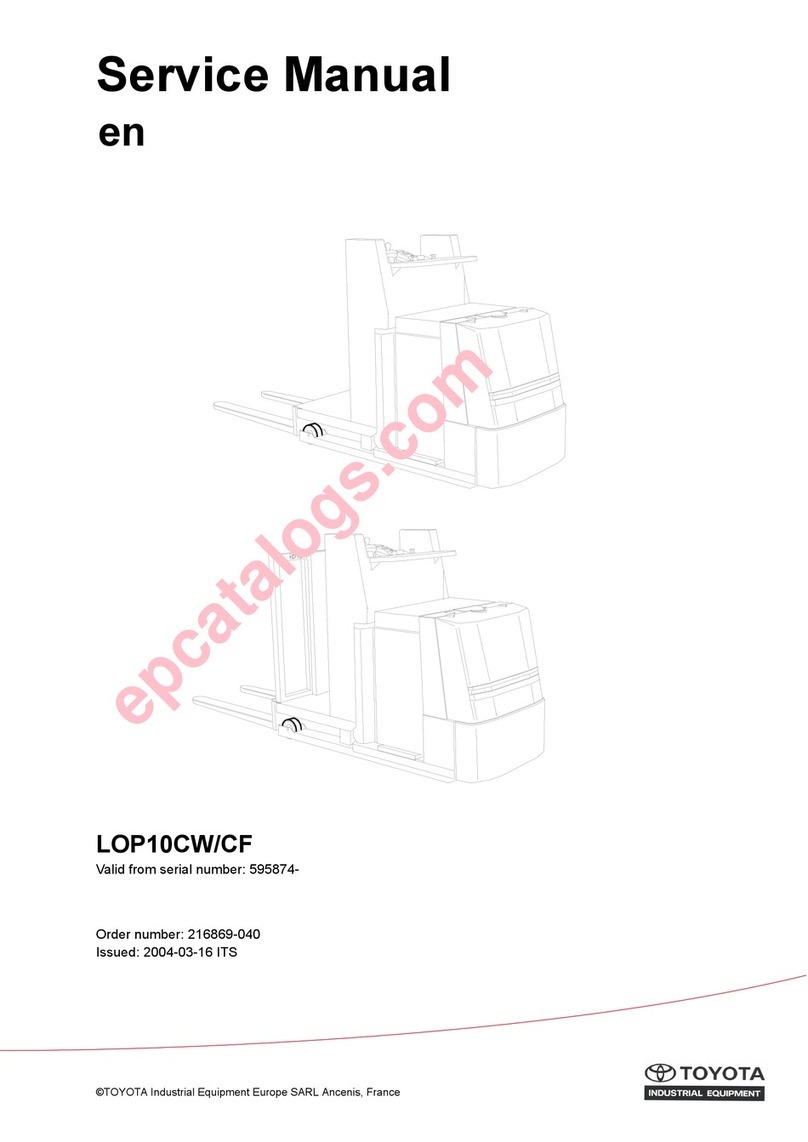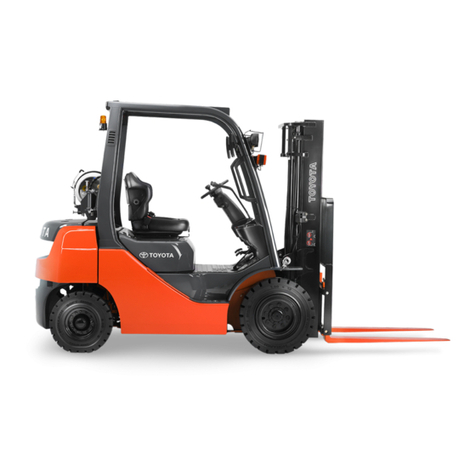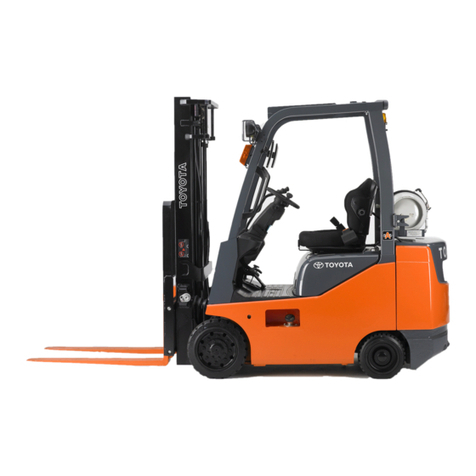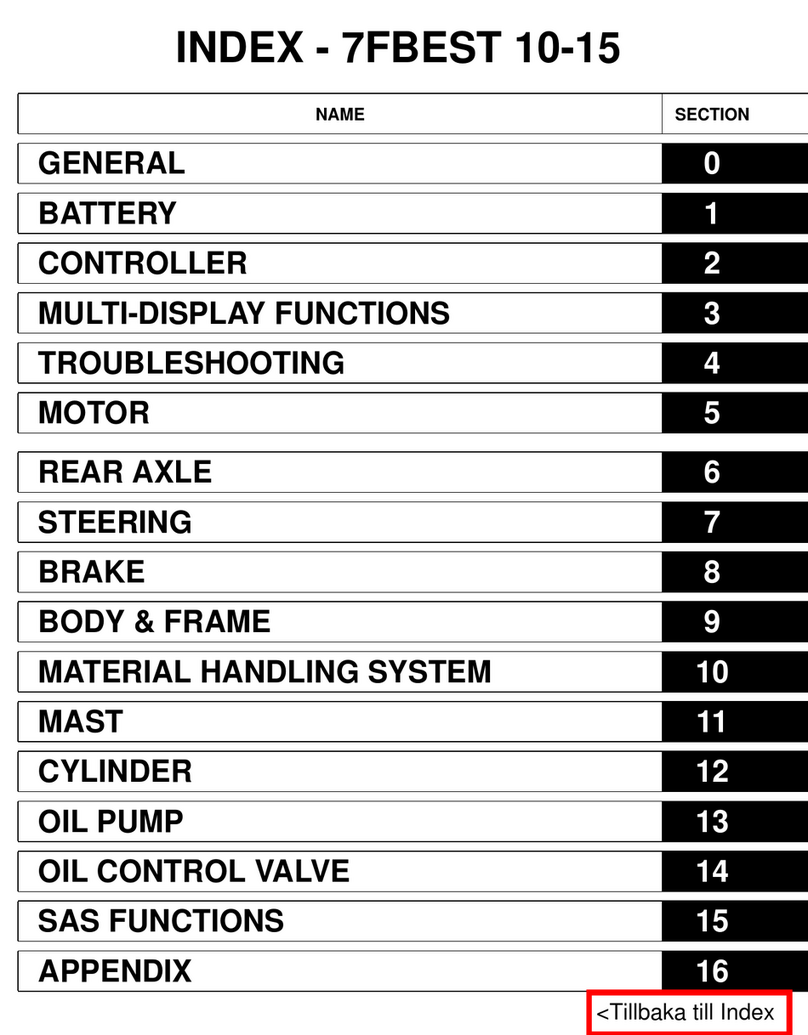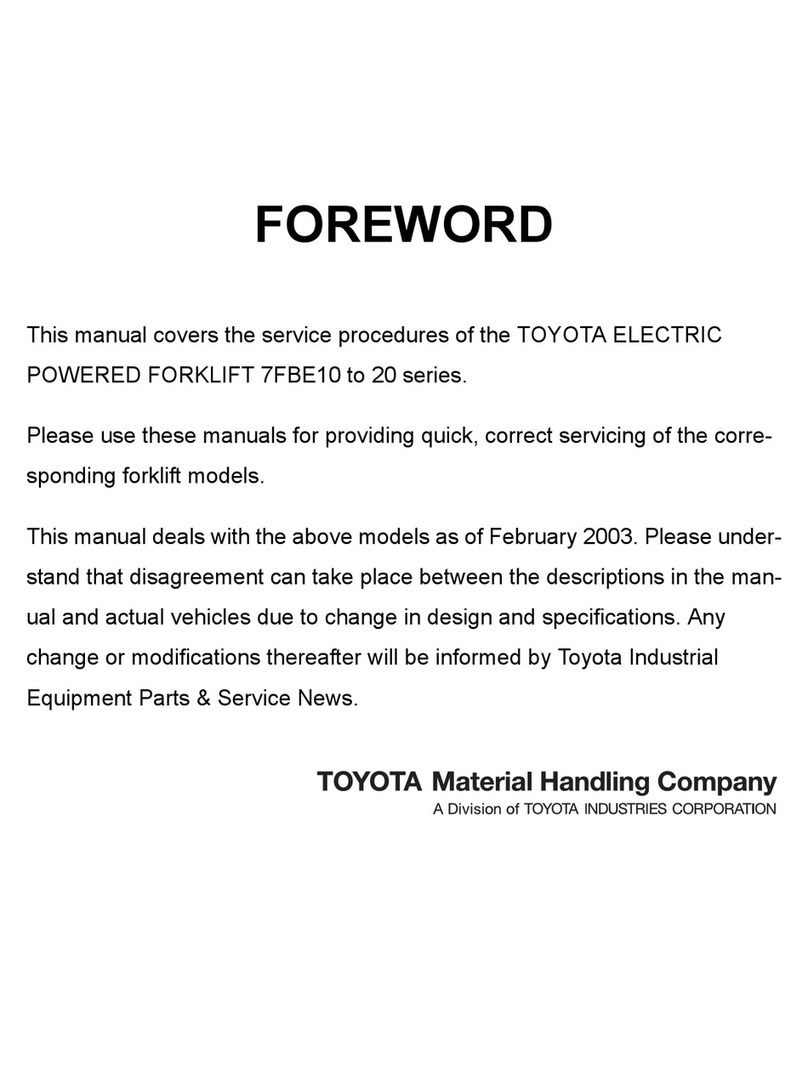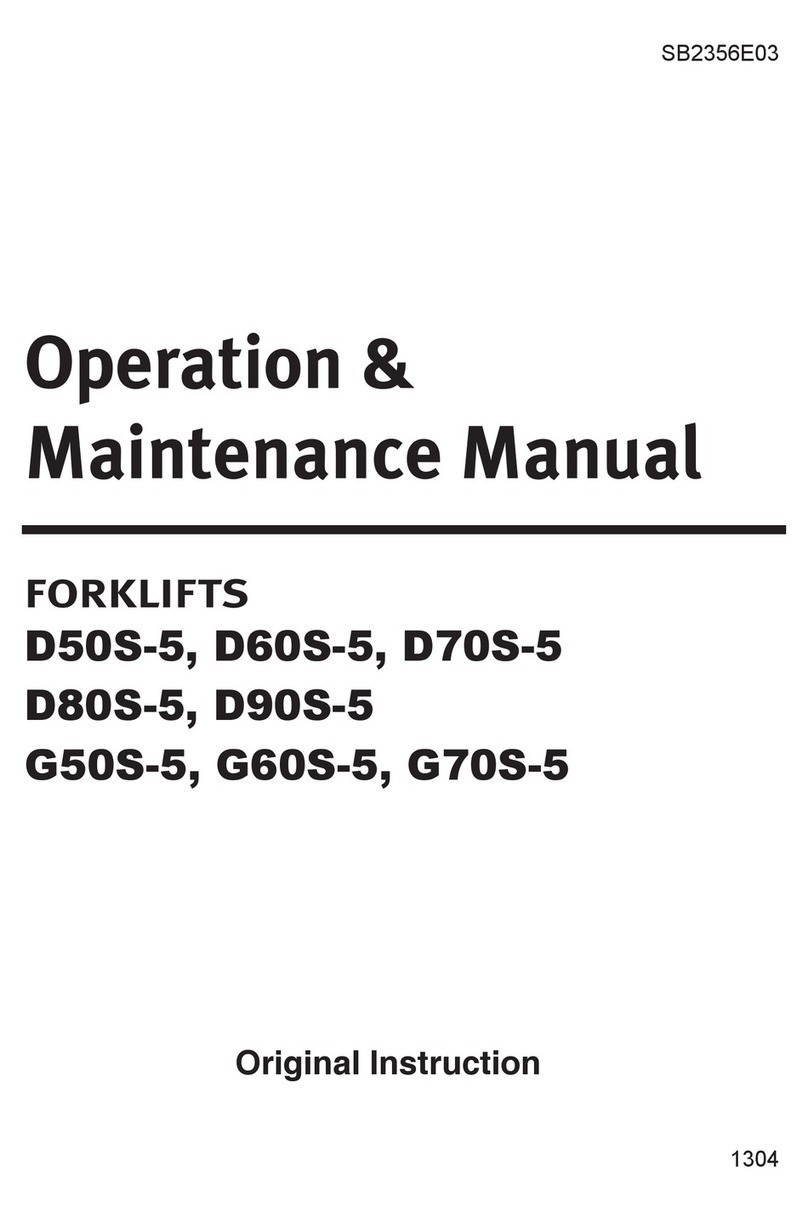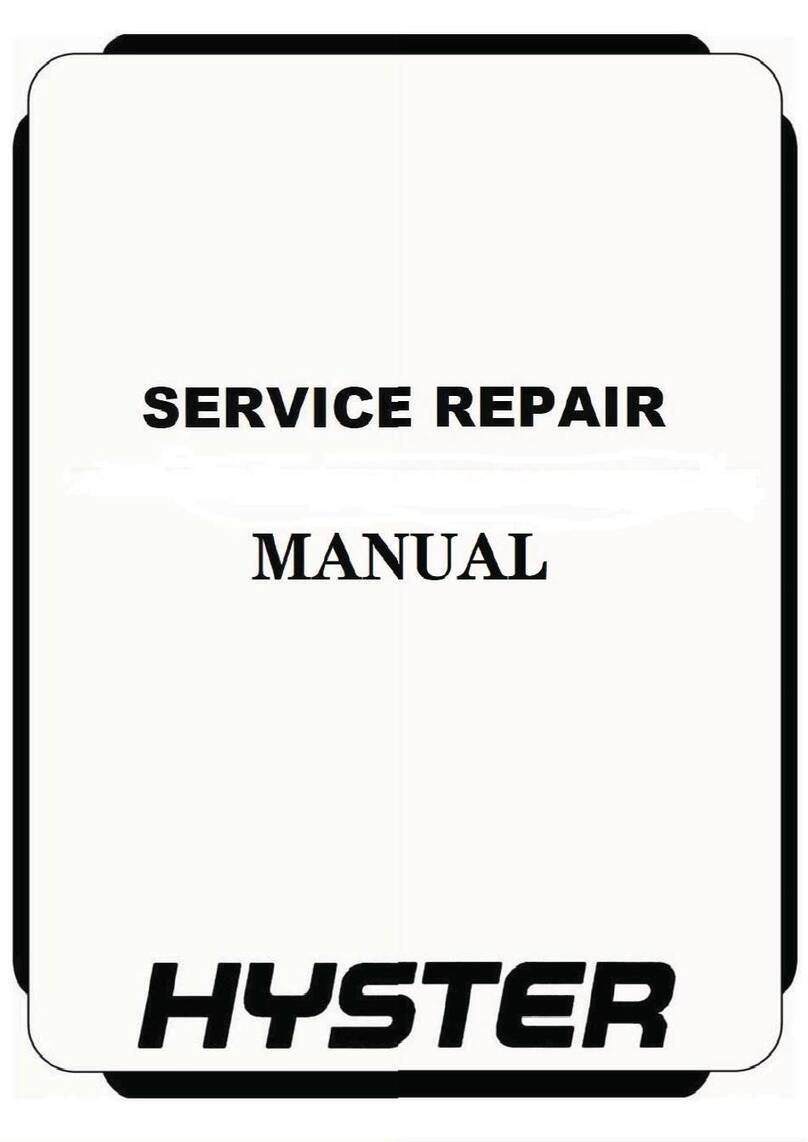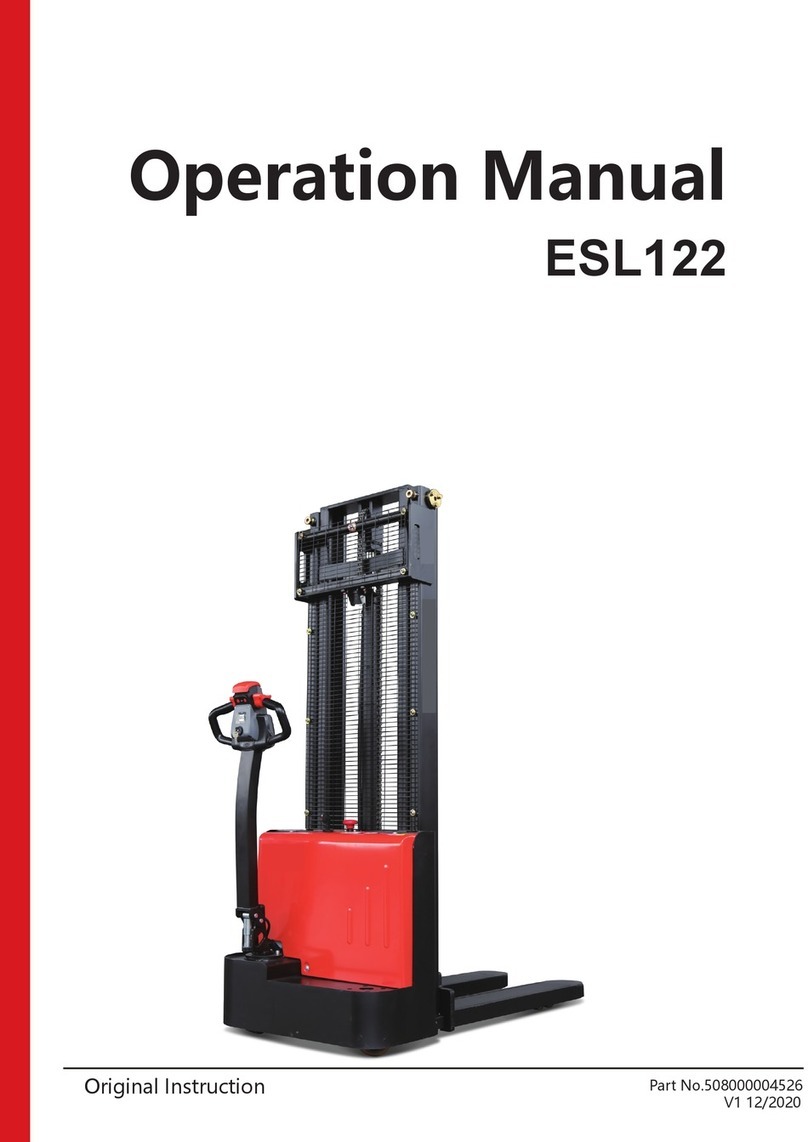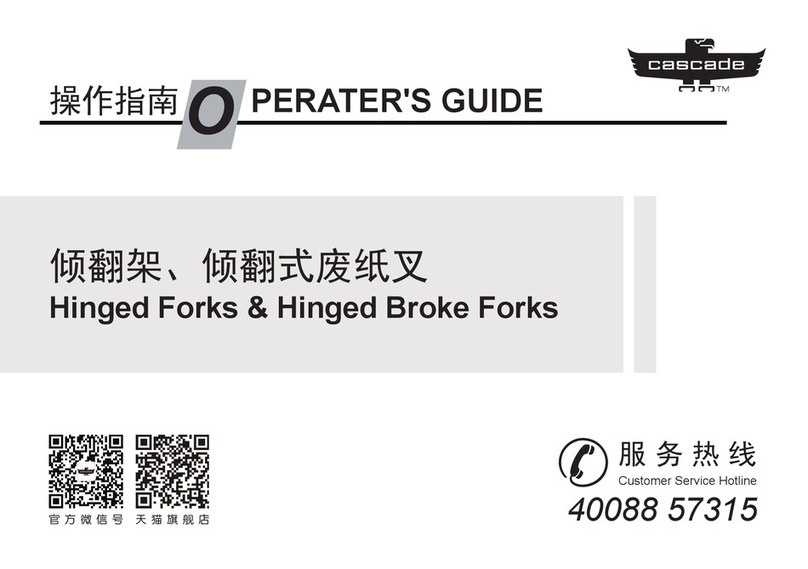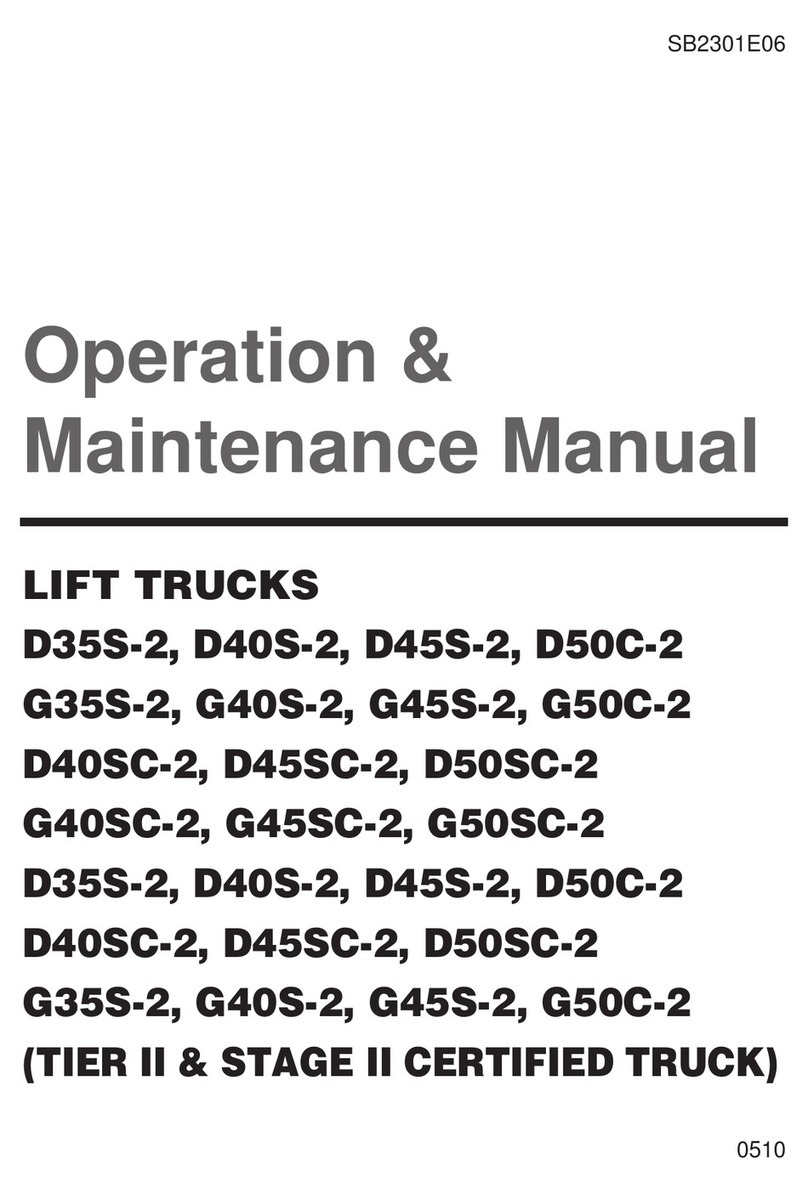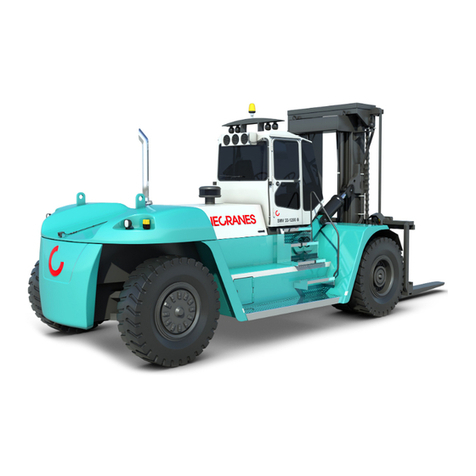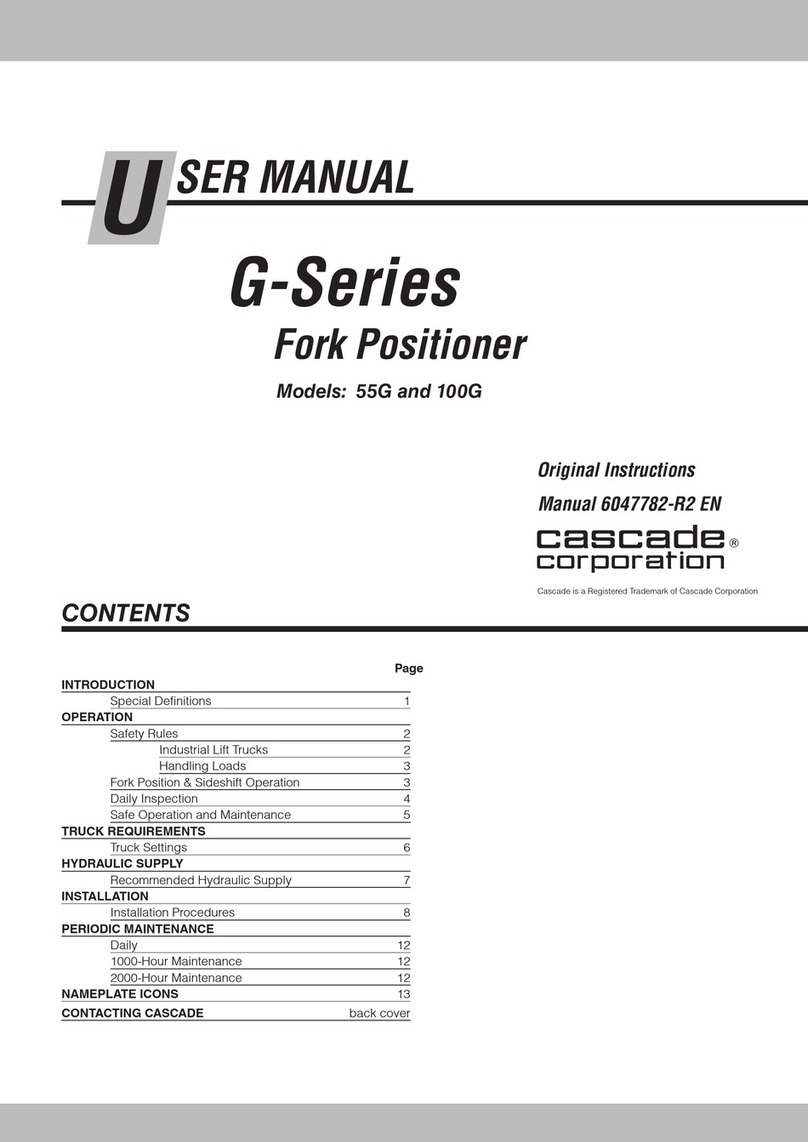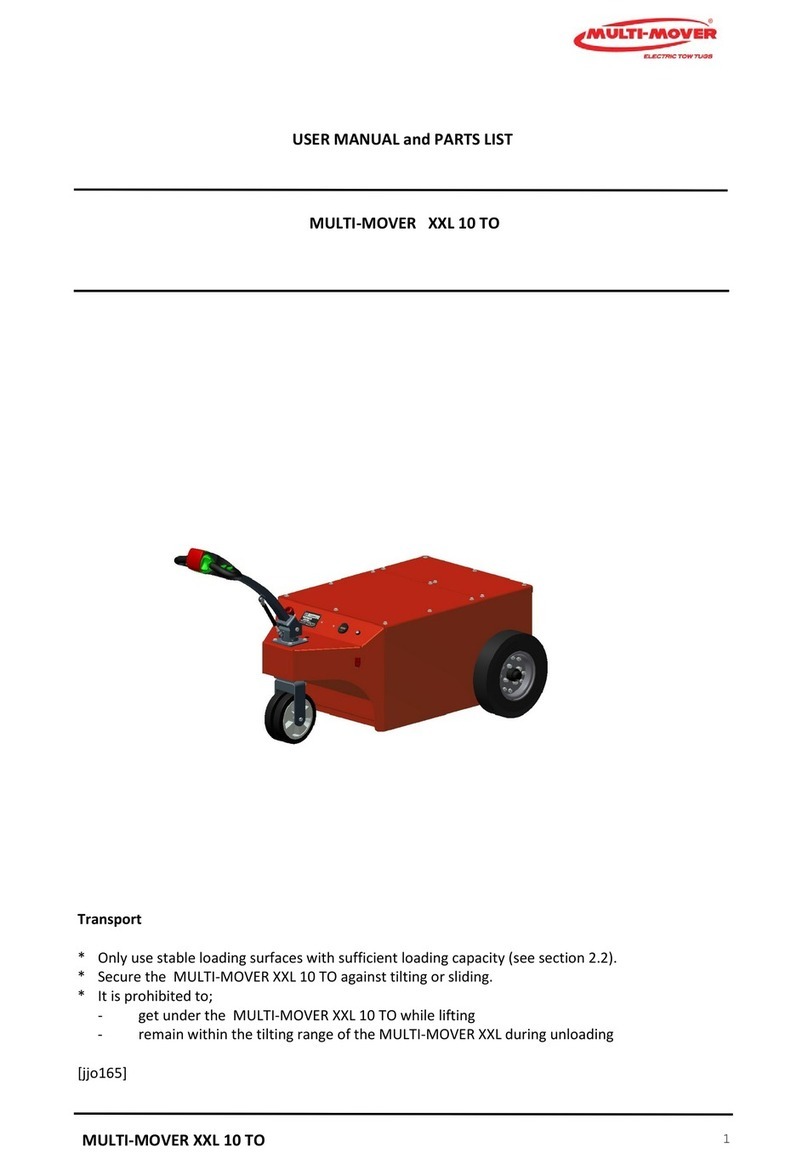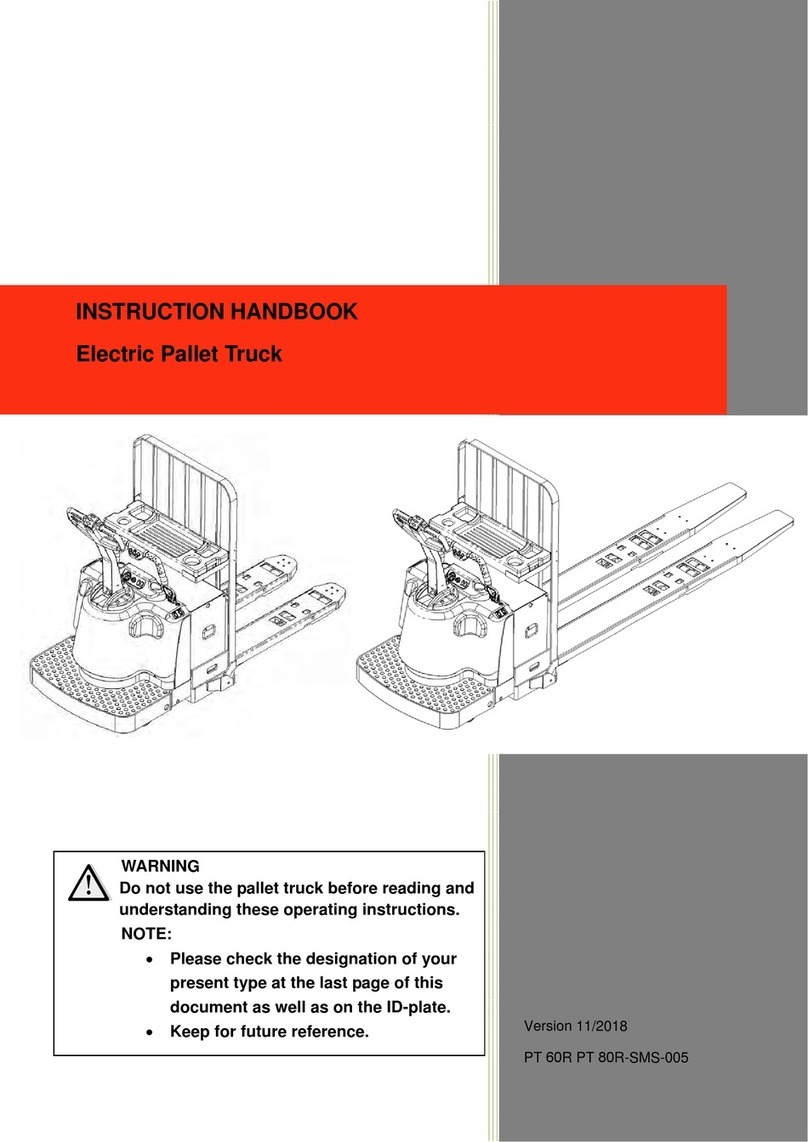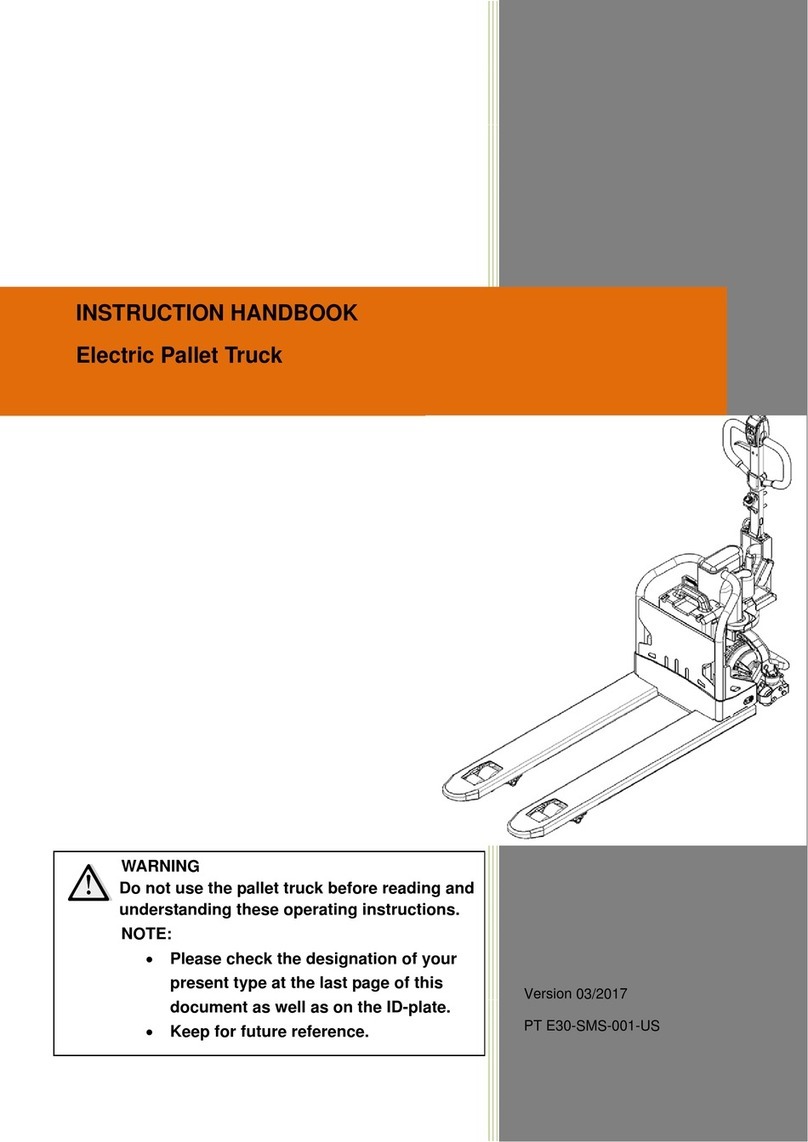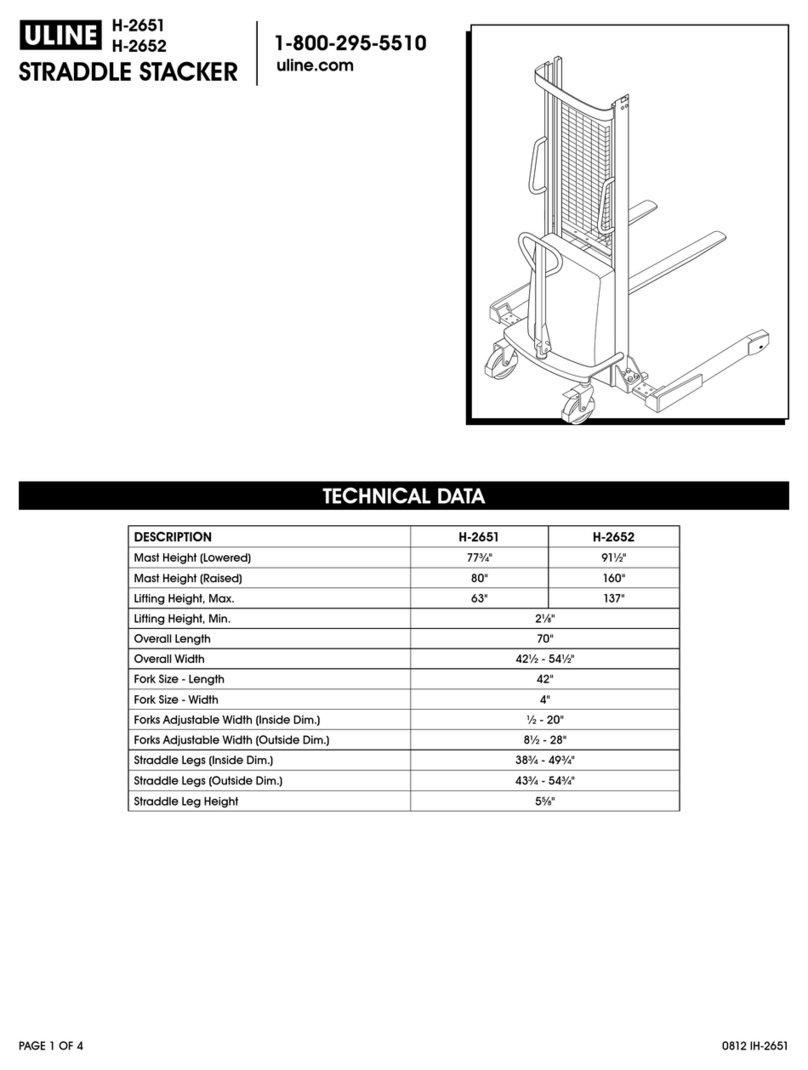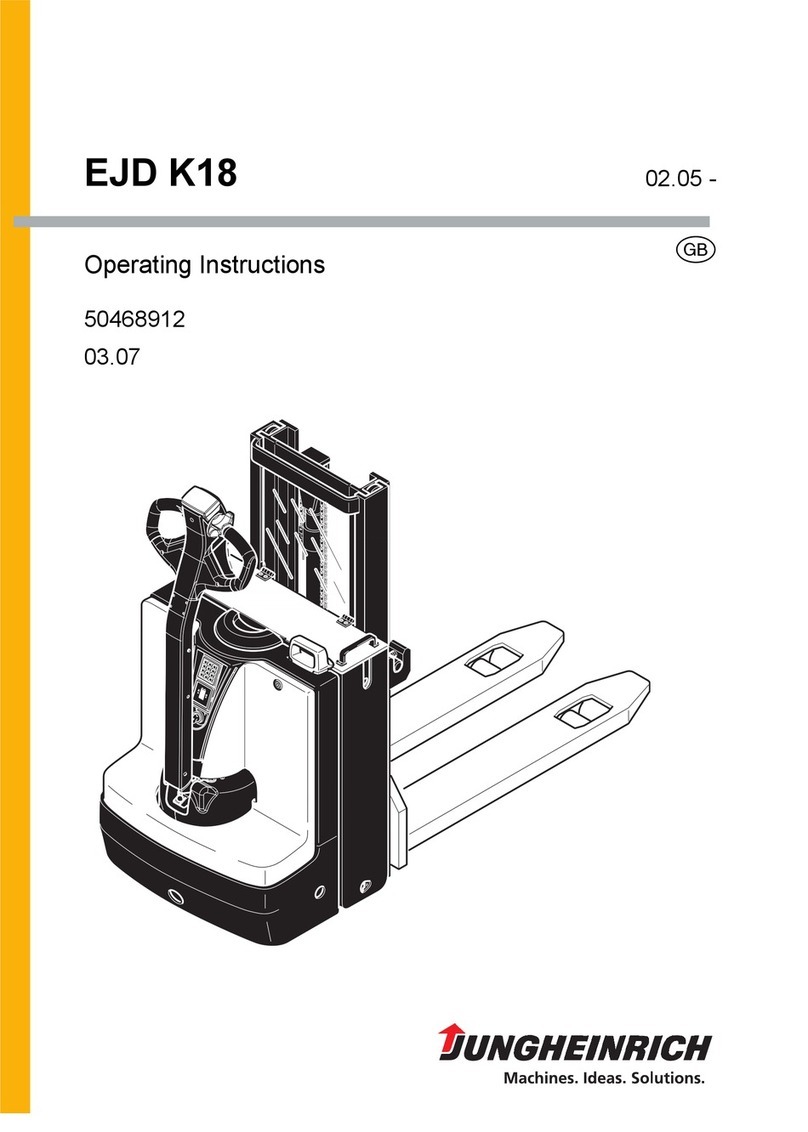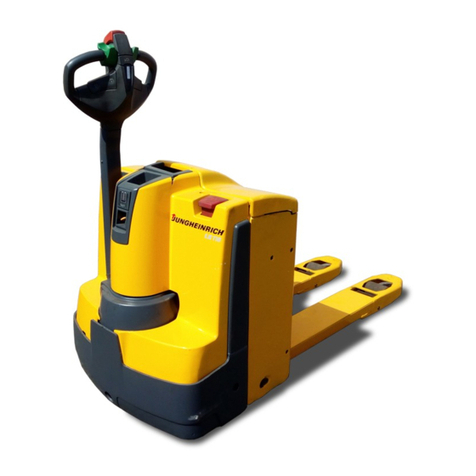
I. OWNER'S SECTION
LIFT TRUCK MODIFICATIONS
lSi
l
24
1
0
3000
,b
-kSF3<.l:FTFL:t
1340
hilEE-SLF
t
"~?+
3700
rnm
600
rnm
,
0
nm
1
Q
;>;,:,:8ca
147 n_ 30 ~n
1
c
r
2590
b
l~~~~~!\i"~':~
/7
B
i/
nt
l
IIIYkJ
PC
"F
I
3700
rnm
1
760
mrn
3
rnrn
1
I
IMPRCPER OPERATION OR MAINTENANCECOULD RESULT
AWARNINGl~
~NJURYOR
DEATP TRAINED
OPARATORSONLY
v
READ 3PERATORS MANUAL FIRST
57847
U1391 71
Standard mast
FSV mast
(Full-Free
L~ft
Three-Stagemast)
The capacity rating of your Toyota lift truck is determined by extensive testing to
provide you with a safe, efficient material handling tool. Changes or additions to the
truck, such as installat~onof a side shifter or changing an upright, change the load
capacity. OSHA and ANSI require that any changes made to a lift truck that
potentially affect its safety must be approved by the manufacturer in writing. Please
protect your employees by contacting your Toyota dealer before making any
change to your truck.
The examples of adding a side shifter or changing a mast or counterweight are
some of the many changes that require approval and revision of a machine's data
plate. Other changes to the steering or braking system, overhead guards, wheels
and tires, can all affect safety. If you are in doubt, call your Toyota dealer and ask.
Do not make any modifications to the electrical system. Any attempt to do so may
affect the operation of the precision devices built into the battery-operated lift truck,
causing a malfunction or accident to occur.
If any modifications become necessary, contact your Toyota dealer.
INFORMATION RESOURCES
You should becomefamiliar with the operating, maintenance and safety instructions
contained in these publications:
General Industry Standards, OSHA
2206:
"OSHA Safety and Health Standards
(29 CFR 191O)", "Subpart N-Materials Handling and Storage", Section 1910.178
"Powered lndustr~alTruck". For sale by: Superintendent of Documents, U.S
Government Printing Office, Washington, DC 20402.
ANSllASME B56.1: "Safety Standard for Low Lift and High L~ftTrucks" (Safety
Code or Powered lndustrial Trucks). Published by: Society of Mechanical
Engineers,Three Park Avenue, New York, NY 10016-5990.
NFPA
505:
"Fire Safety Standard for Powered lndustrial Trucks; Type
Designat~ons,Areas of Use, Maintenance and Operation".
NFPA 58: "Storage and Handling Liquified Petroleum Gases". Ava~lablefrom:
National Fire Protection Association, Inc.,Batterymarch Park, Quincy, MA 02269.
National Safety Council Data Sheets: "1-664- Writing and Publishing Employee
Safety Regulations"; "479-Liquified Petroleum Gases for lndustrial Trucks"; "317-
Powered Hand Truck"; "653-Powered lndustrial Lift Trucks"; "195.71-The "In-Plant
"Pedestrian".
Available from: National Safety Council, 444 North Michigan Avenue, Chicago, IL
60611
Accident Prevention Manual for lndustrial Operations: Two volumes.
"Administration and programs", and "Eng~neer~ngand Technology".
Available from: National Safety Council, 444 North Michigan Avenue, Ch~cago,IL
60611.
Publications Concerning Safe Handling and Storage of
LP
Gas: Contact.
National LP Gas Association, 1301 West 22nd Street, Oakbrook, IL 60521
If you have any questions about the application of this informationto your workplace,
contact your Worker's Compensation lnsuracne Company or Toyota Material
Handling, U.S.A., Inc.
1
Park Plaze, Suite 1000, P.O.Box 17419, I~ine,CA 92623-
7419.
Property of American Airlines

